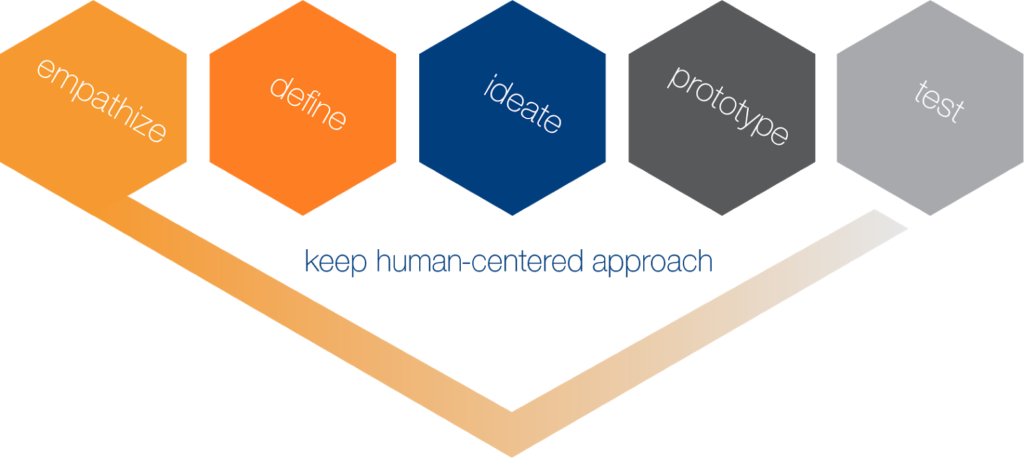Design thinking, say what?
Posted by: Emma SluiterAs a new member of the Elexicon team, I wanted to learn more about not only our design processes but other communication professionals in our community. So, on January 17, 2019, I attended a West Michigan PRSA event on the topic of design thinking. The educational event was led by the West Michigan Center For Arts + Technology (WMCAT). The hosts were Brandy Arnold and Kirk Eklund, and they targeted the one-hour conversation toward PR practitioners.
What is design thinking?
According to the hosts, design thinking—or human-centered design—is “intentional problem solving.” This mindset can be applied when constructing products or processes.
This intentional problem solving method has a five-step approach that was originally proposed by the Hasso-Plattner Institute of Design at Stanford. The five steps are:
- Empathize
- Define
- Ideate
- Prototype
- Test

Brandy and Kirk informed us that the five-step approach is not linear and that there will be no clear step to transform and/or solve a problem. Design thinking can even revert back to the first step due to research findings along the way. That said, it is important to include empathy in each step because centering the target audience will ensure a successful outcome for the entire process.
A design thinking example
To dig deeper into the impact of design thinking, Kirk provided an example: an MRI machine created by Doug Dietz, a designer at GE Healthcare.
Dietz created an MRI machine that was supposed to change healthcare. Although the MRI machine was helpful for providers, he discovered that patients, specifically kids, were afraid of the machine. He was dissatisfied with his original invention, and sought to find out why the kids feared the machine.
Dietz utilized the first step of design thinking: empathy. Through his study of how kids felt about the MRI machine, he found that younger kids feared it because there was a lack of adventure in the MRI experience. From this insight, Dietz adapted the machine to create the Adventure Series.
The results of Dietz’s human-centered design approach were outstanding. According to Kirk, the sedation rates of MRI experiences dropped from 80% to 1% from these changes. Furthermore, this example shows the tremendous impact of a collaboration between innovation and empathy.
To understand this design thinking example further, watch a TED Talk led by Doug Dietz himself.
“When you design for meaning, good things will happen.”
Doug Dietz, designer at GE Healthcare
Final Thoughts
To wrap things up, I learned that design thinking is a flexible process that can help solve problems in unique ways.
Elexicon takes a similar approach to design thinking and human-centered design, which we incorporate into our agency principles. I believe that this process can help you solve even the most complex problems, and provide valuable insights for any company or organization.